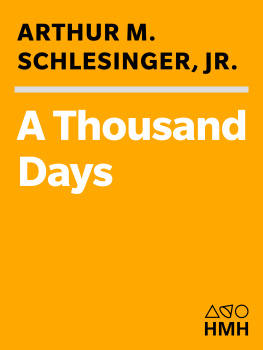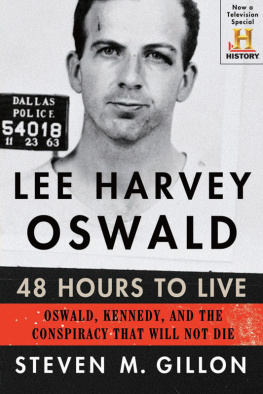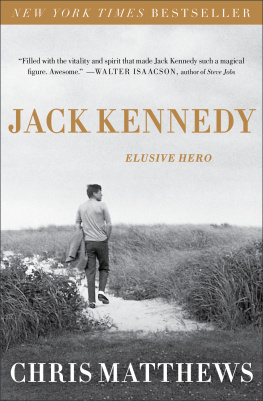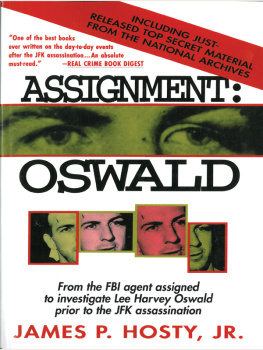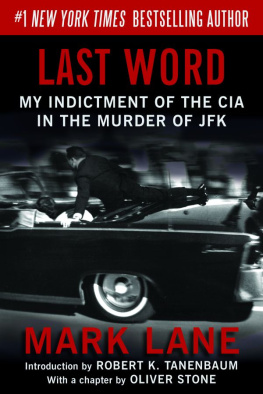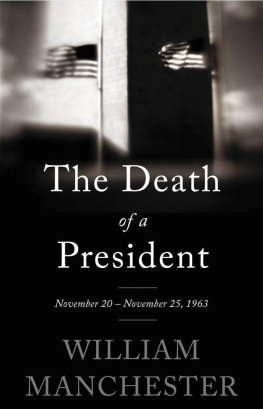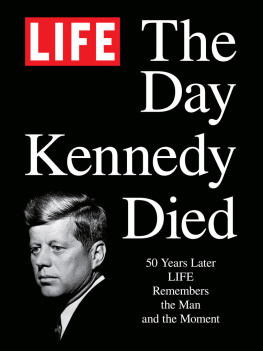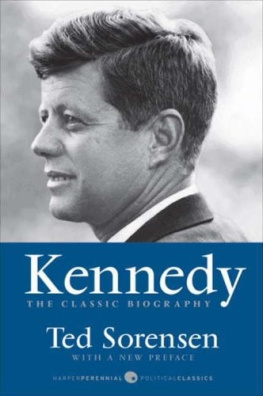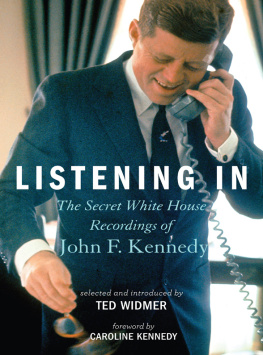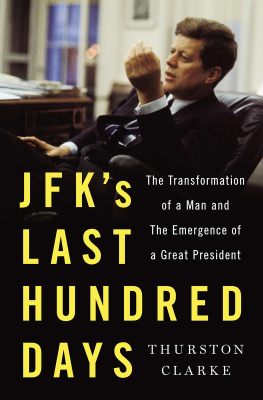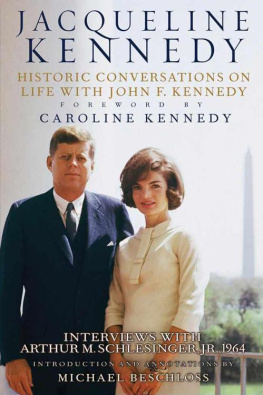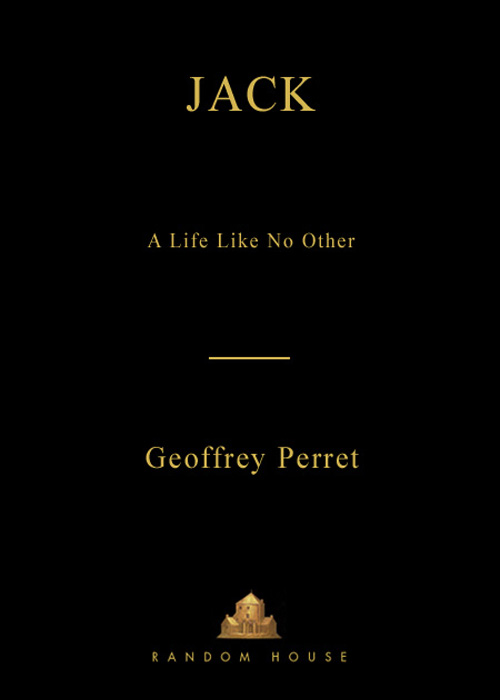
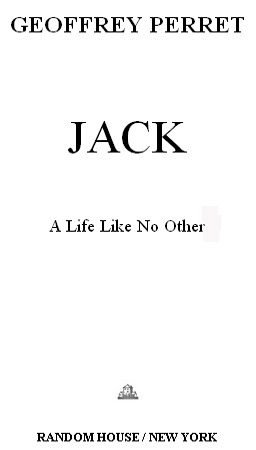
Contents
This book is dedicated to
THOM BRESNAHAN
JOSEPH COPPOLA
CARLO AND SHIRLEY DESTE
Whenever I think of Boston now,
I think of them.
Acknowledgments
I have been fortunate while researching this work because of the wealth of new sources that became available only in the 1990s. This is especially true of thousands of official documents, the White House tapes made during John Kennedys presidency, the diaries that Kennedy maintained during his foreign travels as a congressman, and the correspondence of Joseph P. Kennedy.
These documentary sources make it possible to corroborate or refute, comprehend or amplify, the many thousands of interviews that have been the principal source for the vast majority of books about JFK. They have enabled me to produce what is, in fact, the first one-volume cradle-to-grave biography of one of the most written about and most intensely discussed figures of the twentieth century. I have been phenomenally lucky.
I am indebted to the dedicated staff of the John F. Kennedy Library in Boston, notably to Megan Floyd Desnoyers, Ron Whealan, Jim Hill and June Parry. It was my good fortune, too, to have had the help of Dr. Sheldon Stern, for many years the historian at the library. Sheldon read the entire manuscript for factual accuracy, but whatever errors remain are entirely my responsibility.
My researches in Boston were also helped greatly by William Fowler and Peter Drummey at the Massachusetts Historical Society. What I owe them is impossible to describe here, but I cannot esteem them too highly.
I was fortunate as well in having the help of Dr. Howard Gotlieb at Boston University. A legendary figure in his field, Dr. Gotlieb is the creator of one of the great modern manuscript collections.
My friend in the Manuscript Division at the Library of Congress, Jeffrey M. Flannery, proved as tenacious, as knowledgeable and as helpful as ever.
The staffs at other archives where I have worked on this bookColumbia University, Princeton and Stanfordwere unfailingly models of courtesy and professionalism. I am grateful to them all.
I am grateful, too, to Paul B. Fay, Jr., of San Francisco, for talking to me and allowing me to read his long and extensive oral history.
Other writers envy me my editor, Robert D. Loomis, as well they might.
JACK
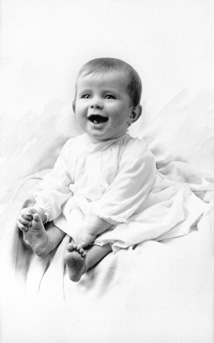
A happy President in the making clutches his foot and laughs as if he already knows the camera will always love him.
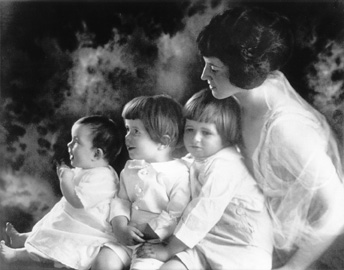
Rose Kennedy poses with, from right to left, Joe Jr., Jack and their sister Kathleen at the end of World War I, not long after she tried to leave her philandering husband, and failed.
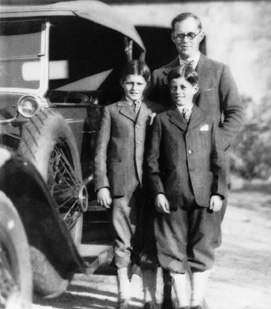
Joseph P. Kennedy poses with his two eldest sons as the bull market of the 1920s reached its frenzied peak. Following the October 1929 Wall Street crash, Joe, thanks to inside information, unregulated markets and lucky guesses, managed to hold on to the millions he had amassed, unlike many of his contemporaries.
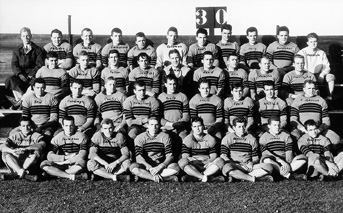
A skinny but eager John F. Kennedy sits third from the right in the front row in this 1937 picture of the Harvard Junior Varsity. Desperate to win his fathers admiration and to prove himself among his peers, Jack Kennedy yearned for football success, without ever showing much ability at the game.
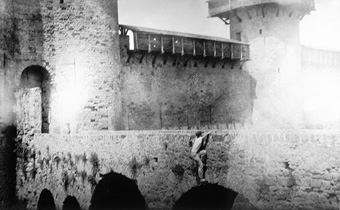
His physical courage and a youthful desire to show off were displayed during Jacks motoring vacation in 1937. Here he hangs by his fingertips above a dry moat at Carcassonne; the ground is more than twenty feet beneath him. When this picture was taken, he had no difficulties with his back; less than two weeks later, a lifetime of problems began.
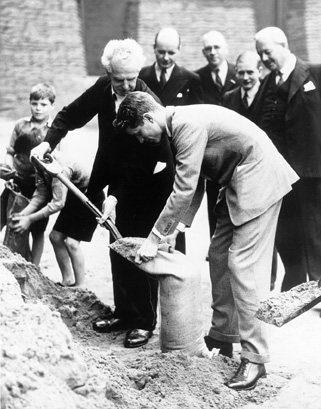
The United States ambassadors son helps fill sandbags in Scotland four days after Britain declared war on Germany in September 1939. It was a statement, in effect, that while Joseph P. Kennedy was a staunch isolationist and appeaser, Jack at once identified himself with Britains defiant response to Hitlers invasion of Poland.
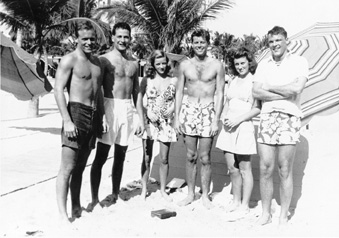
Palm Beach, December 1940: Jack poses on the beach outside his parents winter home with two friends and their dates. At the right is his lifelong friend from Choate, Lem Billings.

An emaciated Lieutenant John F. Kennedy is reunited with Lem Billings in 1944, after commanding PT-109 in the South Pacific. Billings, like Kennedy, had not been able to pass his Navy physical without the intervention of Joseph P. Kennedy, a man powerful enough to fix almost any problem except Jacks precarious health.
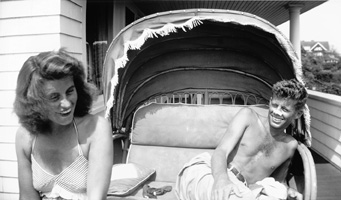
Always a sun worshiper, Jack Kennedy tries to regain his health and strength by basking in the Florida sunshine in the winter of 1944 with his adored eldest sister, Kick.
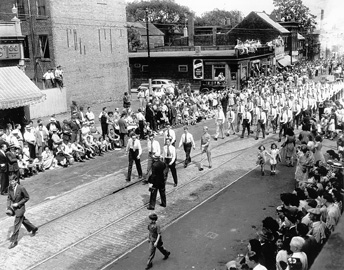
In June 1946, congressional candidate John F. Kennedy (far left) leads the Bunker Hill Day parade. A politician was expected to wear a hat in those days, but Kennedy loathed hats and did not even own onehere, he carries a hat borrowed from a campaign worker. Minutes after this picture was taken, he collapsed from exhaustion; nevertheless, he won the primary election the following day.
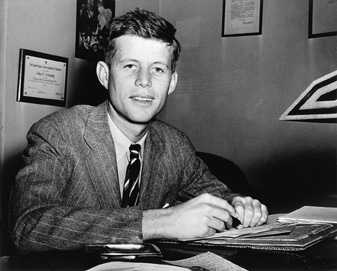
A skeletal and almost weirdly youthful congressman takes up his duties in Washington, January 1947.
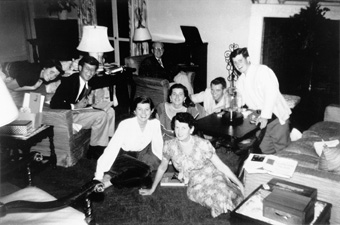
Next page

